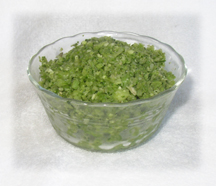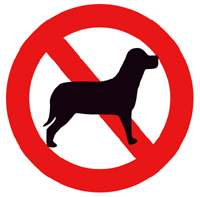
Buy The Best Pet Food At Hare-Today

Natural Balance Certification Credentials
Lio Suffering From Chronic Laminitis
![]()
Susanella Noble: Flutist & Composer
- Cordillera
- Reviews & Bio
- Teaching Studio
- Flute Repertoire
Homefeeding DOGS
Please read How To Start Homefeeding Your Pets First
For homefeeding cats, please click here
Anybody can be a pet chef! You don't have to have a degree from the Culinary Institute of America or wear a toque. Just cook healthy meals for yourself and your family and simply give some to your pets. Variety is the key to a balanced diet -- some days your pet might get more grain than meat or more vegetables than grain. Remember, what they don't get one day, they can get the next. If you use your common sense, cook plenty for your family and stay away from chocolate, grapes and onions, you can instantly become a pet chef by giving your dogs the leftovers from your meals.
If you choose to homefeed raw meats to your dogs, please read all about Dr. Billinghurst's BARF Diet
Dogs:
There is now evidence to suggest that the dog has been man's best friend for more than 70,000 years. Our primitive ancestors would have shared their hard-earned food only with creatures who were worthy. Hunting dogs would have been the favored canine, earning their keep at the kill. When early humans moved out of their caves and began building towns they took their 'best friends'. Guard dogs began to evolve with other loose-knit sorts of breeds such as herding dogs and every community developed their own variety of vermin-hunting dogs, the terriers. Companion dogs became smaller and more stylized as societies evolved and they became status symbols.
Think back to the year 1900, several decades before the creation of commercial pet food. Farmers and ranchers all kept dogs for guarding and herding and town folks had their smaller watch and lap dogs. Hunters depended upon the sporting breeds to help them provide food for their family. The wealthy and the royalty all had their own special breeds. Pet owners had to take the time to prepare meals or share their own food with their dogs. They fed them meat, grains and vegetables without chemical preservatives, artificial vitamins and colorings and dogs lived longer and were healthier.
Each variety of breed types have their own nutritional requirements. For example, companion dogs have been eating the same food as their owners and over thousands of years have adapted to eating more cooked meats. Hunting and sporting dogs would be fed from the kill and should fare better eating more of a raw diet. Herding dogs would never be offered lamb by a shepherd for fear that it would develop a taste for it, hence those breeds would fare better on poultry or beef. Sporting dogs would be fed from the kill to stimulate their hunting instincts.
![]() Canine
Feeding Formula
Canine
Feeding Formula
- 2 parts meat
- 1 part grain (cooked)
- 1 part raw, puréed or juiced green vegetables (occasionally steamed or cooked)
(I use a small clove of pressed garlic in every meal to ward off fleas and ticks)
Mix together approximately 2 parts meat, 1 part cooked grain and 1 part raw, puréed vegetables
feed ½ cup for every 10 pounds of dog's body weight
A 30 pound adult dog would get 1½ cups of food a day
A growing puppy should get twice the amount or ½ cup of food for every 5 pounds of body weight
(If your dogs is too heavy, feed less; if he is too skinny, feed more)
You can use the suggestions in Wm. Cusick's book about breed appropriate foods
(I'm cheap and lazy so I've learned to take shortcuts. At night I'll put rice, water and frozen hamburger in my rice cooker or crockpot, turn it on, and the next morning I'll have dog food!)
![]() Geriatric
Canine Feeding Formula
Geriatric
Canine Feeding Formula
Many older dogs become intolerant to grains. When you see signs of indigestion, coat/skin problems, an unusual odor, it may be time to eliminate all grains from your dog's diet. Good substitutes would be yams, sweet potatoes, burdock root or potatoes. Experiment carefully to see what is best for each dog.
- 2 parts meat (raw or cooked)
- 1 part yams (cooked & mashed)
- 1 part raw, puréed or juiced green vegetables (occasionally steamed or cooked)
Meat and Protein Sources
- Beef, buffalo, turkey, chicken, lamb, pork, venison
- Eggs
- Fermented or curdled dairy such as cheese, cottage cheese, yogurt and occasionally milk
Cooked Grain Sources
Barley, oats, brown rice, quinoa, tabouli, couscous
Breads, cereals & pastas
(remember that ANYthing is better than commercial dog food!)
Vegetables, Raw or Cooked
Artichoke hearts, arugula, asparagus, beets, bok choy, broccoli, cabbage, carrots, cauliflower, celery, corn, garlic, green and wax beans, kale, lettuces, peas, potatoes, pumpkin, spinach, squash, sweet potatoes, Swiss chard, tat soi, yams

a puréed "salad" of broccoli, lettuce, kale and celery
Note: All raw vegetables need to be broken down to be digested by dogs, especially green vegetables which contain cellulose. You should grate, purée, juice, steam or mash vegetables.
Water - H²0
Water is the foremost essential requirement for life and should be kept in front of your dog 24/7. Clean and refill the bowl daily. Use purified or distilled water because most dogs are sensitive to chlorine and fluoride.
-
 Do
NOT feed dogs any of the following:
Do
NOT feed dogs any of the following: - Chocolate: contains theobromine which is a cardiac stimulant and a diuretic; the darker the chocolate, the higher the toxic effect
- Grapes/raisins: have a mold that causes acute renal (kidney) failure
- Onions, Shallots, Elephant Garlic, Leeks: all members of the Liliaceae family (except for garlic) contain large amounts of thiosulphate which causes hemolytic anemia
- Alcohol: intoxication causes liver failure
- Fresh active yeast and sourdough starter: have the same intoxicating effects as alcohol.
- Macadamia nuts: causes locomotory difficulties and temporary paralysis.
- Cooked bones: only give dogs raw bones because they become brittle and splinter. Ideally, you should freeze raw bones before feeding and, once they have been given to a dog, throw them out after a week.
- Raw salmon, trout & Steelhead fish: They carry a larvae that can be 90% fatal but there is an antidote
- Mushrooms: Specifically Amanita varieties cause liver disease and neurologic disorders
- Raw lamb meat: carries the coccidia parasite that is passed on to humans
- Dry, processed dog food: causes skin irritations, cancers, digestive disorders and shortened live span.
If your dog has eaten an excessive amount of any of these contact your veterinarian immediately.
Or call the following:
ASPCA Poison Control Hotline (1-888-426-4435)
National Animal Poison Control Center ( 1-900-680-0000)
Avoid Feeding:
- hot spices and chili peppers
- refined sugars
- acidic sauces such as Italian, Indian or Mexican
- all treated leather, rawhide, pig ears, pig feet and chew toys that have been chemically treated
![]() Supplements for Dogs
Supplements for Dogs
Dogs require more calcium than humans but it needs to be natural and digestible. I would suggest finding a balanced supplement made from chelated amino acid complex vitamins and minerals. I have seen radical improvements in my dogs and am THRILLED with the Dynamite Specialty Products.
![]() Feeding Tips
Feeding Tips
-
Organic meats, grains and vegetables are the best. (generic is still human grade and everything is better than commercial pet foods)
-
Bones: should be raw, large knuckle; freezing in advance kills harmful bacteria; thaw before giving to dogs; replace weekly
-
Cook all or some of the meat with the rice or grain. This allows the it to absorb some of the fat and carry it into the dog + it's more tasty
-
A dog can virtually over-dose on any substance, food or even hand-held electronic devices. Be sure to police your dogs' territory to make it safe from objects, poisonous plants or hazardous materials.
-
Keep all handles on the stove turned inward
-
Teach your dog to only eat what you put in his bowl just like they do with guide dogs.
-
Teach your dog "NO"
Once you see that you can feed your dogs virtually the same food that you're eating, it becomes easy to homefeed. Just make extra and give them the leftovers.
![]() Buckaroo's Favorite Breakfast Meet The Buckaroo
Buckaroo's Favorite Breakfast Meet The Buckaroo
- 1 pound hamburger
- 1 cup oatmeal
- 1 1/2 cups water
- 1 cup fresh Romaine lettuce leaves (eyeball it)
Slowly cook the hamburger in a large skillet. Drain off half the fat into a freezer container to save for dog cookies.
Add oatmeal and water and stir while bringing to a boil Turn down the heat, cover and simmer for 1 minute.
In a blender or food processor, puree the lettuce or chop finely (may also be juiced). Let hamburger mixture cool before adding lettuce.
Serve a mixture of all ingredients at 1/2 cup for every 10 pounds of dog's body weight.
The hamburger/oatmeal mixture may be stored in freezer or refrigerator in individual portions. Keep the lettuce stored separately in refrigerator to serve fresh with every meal as a salad.

Please feel free to contact me with questions
808-968-0893
![]() 111811
111811
© 2011 Susanella Noble
